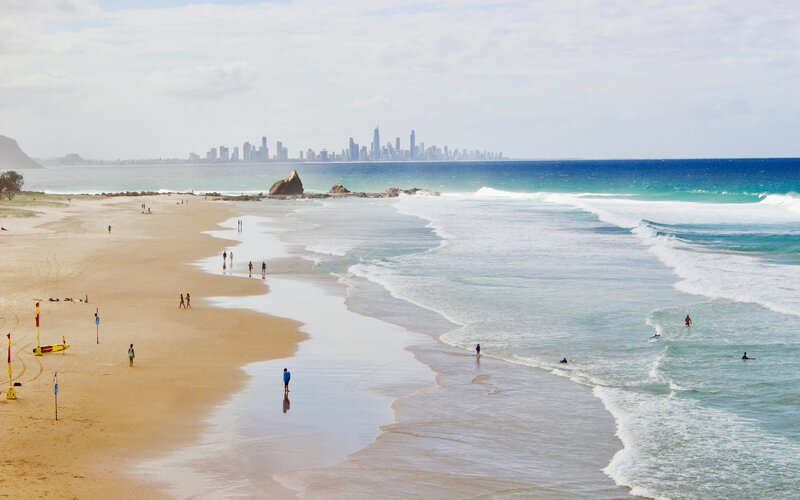The term principal place of residence, or PPOR, is used to describe the home that a person primarily lives in. It sounds pretty straightforward, but a principal place of residence has special significance in the legal sense and also to the tax man.
What defines a principal place of residence?
Here’s a fun fact: the Australian Taxation Office (ATO) uses the term ‘main residence’ to refer to principal place of residence, which is more a state and territory government term, but they both essentially mean the same thing.
According to the ATO, a dwelling is considered your main residence if:
-
you and your family live in it
-
your personal belongings are in it
-
it is the address your mail is delivered to
-
it is your address on the electoral roll
-
services such as electricity and gas are connected.
State and territory governments may have slightly different wordings to their definitions, but they’re all on much the same page.
What counts as a principal place of residence?
According to the ATO, your main residence can’t be a vacant block - it has to be a “dwelling” wholly or mainly used for residential accommodation, such as:
-
a house or cottage
-
an apartment or flat
-
a strata title unit
-
a unit in a retirement village
-
a caravan, houseboat, or other mobile home
It seems a no brainer but for somewhere to be considered your principal place of residence, you also must have actually lived in it.
Why is principal place of residence important?
The reason governments are so particular about principal places of residence is that they are widely granted exemptions from many forms of taxation as well as concessions on taxes such as stamp duty.
The ATO’s interest in what constitutes a main residence is because such homes are exempt from Capital Gains Tax (CGT), a tax incurred when you make a profit on any asset you sell, including property.
If you make a nice profit selling your home, or principal place of residence, the profit is all yours to keep, but if you make a profit on a property you own but haven’t lived in, the ATO will take a slice of it.
So, on top of the criteria outlined above, the ATO adds in a few more as to what constitutes a main residence exempt from CGT. Your dwelling:
-
must have been the home of you, your partner, and other dependants for the whole period you have owned it
-
must not have been used to produce income – that is, you have not run a business from it, rented it out or 'flipped' it (bought it to renovate and sell at a profit)
-
must be on land of two hectares or less.
If you don’t tick the boxes for all these, you may only be entitled to a partial CGT exemption. The ATO has ways of calculating this and it can get pretty complicated.
The six-year rule
While the Tax Office has strict criteria on defining a principal place of residence, it also allows homeowners to rent out their property and still claim it as their main residence for CGT exemption purposes for up to six years.
This is to provide for people who may have to move temporarily, for example, for work purposes or perhaps an extended period of travel, but plan to return to live in the property again.
Basically, it allows a homeowner to rent out their home but still claim the capital gains tax exemption provided the home is rented for less than six continuous years. After or during that time, the homeowner can move back into the home and re-establish it as their principal place of residence again.
Once this happens, they are free to rent it out again for another six-year period which resets each time, provided the home has remained the owner’s principal place of residence between rental periods.
If the home is sold while it is rented out for less than six years, the homeowner can claim the full CGT exemption as though they had lived there for the entire period.
The catch is you still have to pay tax on the income you earn from the rent, and you can’t establish another property as your principal place of residence except for up to six months if you move house. There are quite a few conditions surrounding the six-year rule, so an accountant or tax professional is best to guide you if you’re thinking taking advantage of it.
How to prove your principal place of residence?
As you can see, there could be times and circumstances that may see you needing to prove your principal place of residence status. You can do this through:
Continuous occupancy
You need to demonstrate you have lived in the home continuously since you purchased it. This means proving you, your family, and your possessions have been housed there during the time you are claiming it as your principal place of residence.
Producing documentation
You’ll need to show the address of your principal place of residence as your mailing or home address, show you are registered on the electoral roll at that address, and produce utility bills in your name to cover the period you have occupied the home.
Temporary absence
As we’ve already established, the ATO allows temporary absences from a principal place of residence without affecting its CGT exemption status. If you have had to be away from your principal place of residence for any reason, you will need to ensure you haven’t established another principal place of residence elsewhere during this period.
Life events
Sometimes life events such as getting married, having a child, or caring for a relative may see you move from your principal place of residence. If this happens, you will still need to maintain the property as your primary residence and demonstrate you intended, or intend, to return to it. This way it may still qualify as your primary place of residence for tax purposes.
Savings.com.au’s two cents
Owning a property doesn’t automatically qualify it as your principal place of residence. It has to be clearly defined by meeting official criteria, and you can only have one principal place of residence.
There are all sorts of minefields you can encounter if you run a business from your home rather than live there or use it in any other way to produce income. The Tax Office will be more than interested if you do and you may be liable to pay capital gains tax when you eventually sell the property.
If you have a granny flat, or a separate dwelling on your property, this can cause issues as well. As always, it is best to consult an accountant or tax professional for advice if there are complicating factors.
First published on January 2022
Image by Ralph Kayden via Unsplash

Ready, Set, Buy!
Learn everything you need to know about buying property – from choosing the right property and home loan, to the purchasing process, tips to save money and more!
With bonus Q&A sheet and Crossword!



 Denise Raward
Denise Raward



 Dominic Beattie
Dominic Beattie

